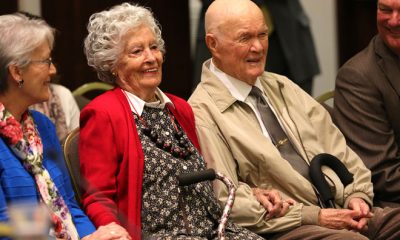British company XploreAir very recently rolled out their first flying bicycle called Paravelo. Inventors John Foden and Yannick Read proudly claimed that it’s the first of its kind in the whole world. When they were very young they have always thought of creating a bicycle that could fly. The creation of the Paravelo proved to be a dream come true for the pair.
The birth of a new flying machine
Mankind has always been curious about exploring the world through flight. Early attempts at manned flight were mostly documented and some of the most significant trials that resulted in huge leaps in aviation were the contributions of American pioneers, the Wright Brothers.
Like John Foden and Yannick Read, the famous Wright Brothers were also former bicycle mechanics. Creating a powered machine that flew was not an easy task for the brothers since the technology was rather limited during their era. Burt, with perseverance and numerous trials, they were finally able to execute the first successful documented flight in the history of aviation. Inspired by the Wright Brothers’ success, Foden and Read came up with an idea that now added another milestone to the history of manned flight.
Connecting the parts
The Paravelo is made to look like any conventional bicycle. The design of the machine is very simple. The bicycle could be used solely for typical rides, but then it can be attached to the lightweight trailer housing the fan and the fuel for flying purposes. Like a glider, the wings are attached to the whole frame and these would unfold once the biofuel 249cc motor starts. However the materials used to make this unique mobile machine are much more expensive than regular bicycle parts. In order to attain he right weight for the lift, this bicycle was made with aircraft grade aluminum suitable for aviation.
Up in the air
Like any other aircraft, the Paravelo requires a lot of ground when taking off. According to Foden and Read, once airborne the Paravelo can fly for about three hours straight at an altitude of about 4,000 feet. Tests results also show that the flying bicycle can soar at the speed of about 25 miles per hour. According to the inventors, once the Paravelo is airborne, it compares closely to that of a fan-powered paraglider. Flight modes can also be changed with this British invention. The fan is detachable and can be directly placed on the back a person.
The invention of the Paravelo precedes the whimsical notion of personal flight. Anybody who can afford a flying bicycle that costs as much as a family car can then freely explore beautiful sceneries from up above anytime and anywhere. But, like any other vehicle, flying may require a proper license. The United States Powered Paragliding Association recommends that proper training should be taken before riding one of these things. Flying is fairly difficult and is not as easy as it sounds.
Raising funds
Currently, XploreAir is working in partnership with Kickstarter to further support the development of the Paravelo. They were able to raise a tenth of the total target and is continuously working hard to meet their goal.















Facebook
Twitter
Pinterest
Google+
LinkedIn
Email